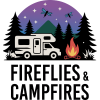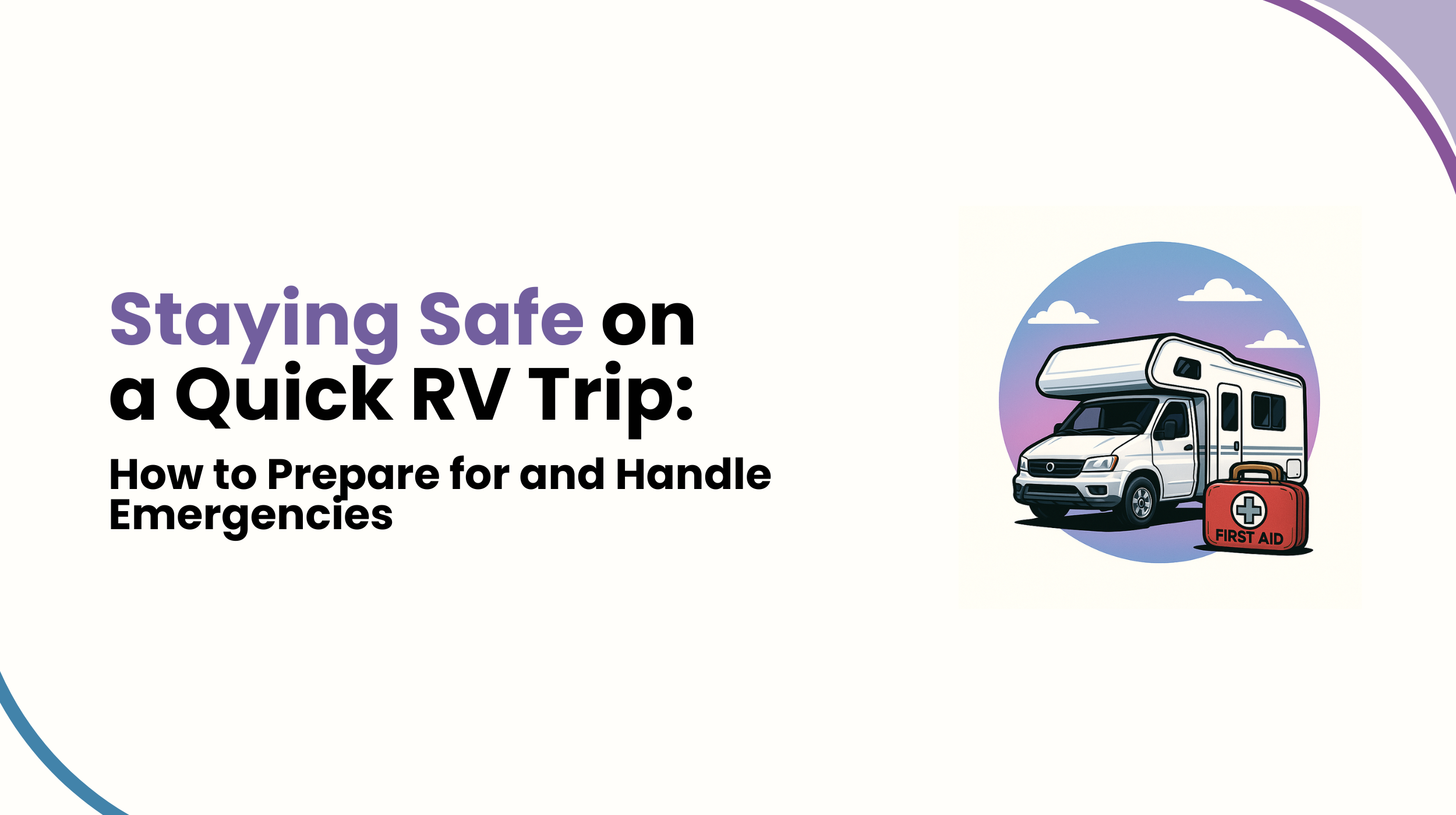When heading out on a short RV trip, whether it’s a weekend at a lakeside resort or a one-night stop on your way to a national park, safety isn’t always the first thing on your mind. You’re thinking about scenic drives, campfire dinners, and unplugging from the daily grind. But smart travelers know that a bit of preparation can go a long way when things go sideways.
Think of safety prep like insurance. You hope you won’t need it, but you’ll be incredibly grateful if you do. From a flat tire on a mountain road to a minor scrape at the campground, knowing how to handle small emergencies turns a potential disaster into a manageable bump in the road. In this guide, we’ll walk you through a few easy, practical steps to help you prepare for and respond to common mishaps during a short RV getaway.
Do a Pre-Trip Safety Check
Before shifting into drive, take 15 minutes for a walk-around safety check. It might not be the most exciting part of the journey, but it sets the tone for a smooth trip.
Start by checking your tires for proper inflation and visible damage like sidewall cracks or embedded debris. Tires that look fine at home can suddenly misbehave when cruising at highway speed. Use a tire pressure gauge and compare the PSI to the manufacturer’s recommendation, which is usually found inside the driver’s door or on the tire.
Test your RV’s exterior lights, including brake lights, turn signals, and reverse lights; they are essential if you’ll be driving at dusk or through tunnels. If you’re in a motorhome, pop the hood and check your engine oil, transmission fluid, and coolant levels. If you’re towing, double-check your hitch, safety chains, and brake controller connections. Having a secure hitch setup isn’t just about safety. It’s about protecting everything behind you.
Now step inside. Make sure to run a quick check of your RV’s safety systems. Ensure your smoke, propane, and carbon monoxide detectors have fresh batteries and are functioning properly. You can press the test button on each device to confirm it beeps as expected. Also, fire up your generator or propane stove for a minute to confirm it’s operating correctly. It’s better to discover issues now than when you’re hungry in the woods.
Lastly, don’t forget your paperwork. Keep up-to-date insurance, registration, and roadside assistance info in your glove compartment or digital wallet. Apps like Good Sam, AAA, or Coach-Net offer emergency RV support, and having those details ready can speed up help if needed.
Pack an Emergency Kit
Once your rig is ready to roll, make sure your emergency gear is, too. A well-stocked kit doesn’t have to take up a lot of space, but it should be thorough enough to help you through minor injuries or roadside hiccups.
Start with a quality first-aid kit. Include adhesive bandages, antiseptic wipes, antibiotic ointment, gauze pads, medical tape, tweezers, pain relievers like ibuprofen, allergy meds like Benadryl, and any prescriptions you or your passengers may need. Throw in bug spray and sunscreen if you’ll be out hiking or relaxing near the water.
For basic roadside tools, think multipurpose. A small toolkit with screwdrivers, pliers, an adjustable wrench, duct tape, and zip ties can handle a lot of unexpected fixes. Include spare fuses, a flashlight with extra batteries, a headlamp, a tire pressure gauge, and a jack rated for your vehicle’s weight. A portable air compressor or battery jump pack is also a wise investment, especially if you’re traveling in remote areas.
Your emergency gear should include a fire extinguisher (check that it hasn’t expired), reflective warning triangles, and roadside flares or LED beacons to make your rig visible in low-light conditions. Keep a multi-tool in your glove box and stash a fully charged power bank for your phone so you’re not scrambling to find a charger if you need to call for help.
Stay Aware of Weather and Alerts
Even on a quick weekend trip, the weather can turn fast, especially in areas prone to spring storms, high desert winds, or sudden cold snaps in mountain passes.
Before hitting the road, check the full forecast for your route and destination using a weather app like The Weather Channel, MyRadar, or NOAA. These tools can alert you to developing conditions like thunderstorms or excessive heat, giving you time to reroute or adjust plans.
While on the road, tune in to local AM/FM radio or use your app for real-time alerts. Severe weather notifications, like flash flood warnings or tornado watches, are especially important when camping in valleys or near rivers.
If you’re caught in a storm, avoid parking under trees, as falling branches can cause major damage, and retract your awning to prevent wind damage. In case of lightning, your safest shelter is inside your vehicle or a solid structure at the campground, not outside or under your RV’s awning.
Practice Campground Safety
Staying safe is mostly about awareness and courtesy once you’re set up at your campsite. For starters, always lock your RV doors and windows when you’re away from the site, even if you’re just taking a walk or heading to the pool. Keep valuables like tablets or GPS units out of sight.
Keep your site clean; this isn’t just about tidiness, it’s about safety. Leftover food, wrappers, and unsecured trash can attract animals from raccoons to bears, depending on the region. Use designated bins or seal garbage in a container until you can properly dispose of it.
Know where the emergency exits are in your campground. RV parks often have maps showing exits, evacuation routes, and emergency contacts. Some resorts have on-site security or night patrol, it’s smart to get their number in case something comes up late at night.
Finally, observe quiet hours and local rules. A well-rested neighbor is a happy one, and if an issue arises at night, following the rules makes sure you’re in good standing if you need help.
What to Do if Your RV Breaks Down
Despite your best planning, things happen. A belt breaks. A tire goes flat. Your engine sputters in the middle of nowhere. Here’s what to do if your RV breaks down during your trip.
First, pull over safely. Use your hazard lights and find a safe, flat area away from traffic, ideally a rest area, parking lot, or the shoulder of a low-traffic road. Avoid curves or hills where other drivers may not see you in time.
Once stopped, assess the situation. Is it something simple, like a tripped breaker, blown fuse, or a flat on a towed vehicle? If you know how to fix it safely, you can do so using your emergency tools. But if you’re unsure, don’t risk further damage or injury. It’s better to wait.
That’s where roadside assistance comes in. Call your provider and clearly communicate your location. Use GPS coordinates, a cross street, or a mile marker for accuracy. Most roadside programs can tow your RV or bring help directly to your location.
While waiting, stay safe. It’s often safest to remain inside your vehicle if you’re near a busy road. If you must be outside, place reflective triangles or flares to warn approaching drivers and keep well off the road.
Be Ready, Then Relax
Nobody likes to think about emergencies when planning a fun getaway, but that’s exactly why being prepared matters. By checking your RV systems before you go, packing the right gear, and knowing how to react in a pinch, you give yourself and everyone on board peace of mind.
The result? You get to focus on what RV travel is really about: discovering new places, relaxing around a campfire, and enjoying the open road with the people you care about. Because when you know you’re ready for anything, even a short trip can feel like the ultimate adventure.

